
4 min read
Inside the Workshop: Forest + Found
WLLW meets the founders behind Forest + Found, an art collective that uses natural and found materials to create remarkable works rooted in craft traditions.
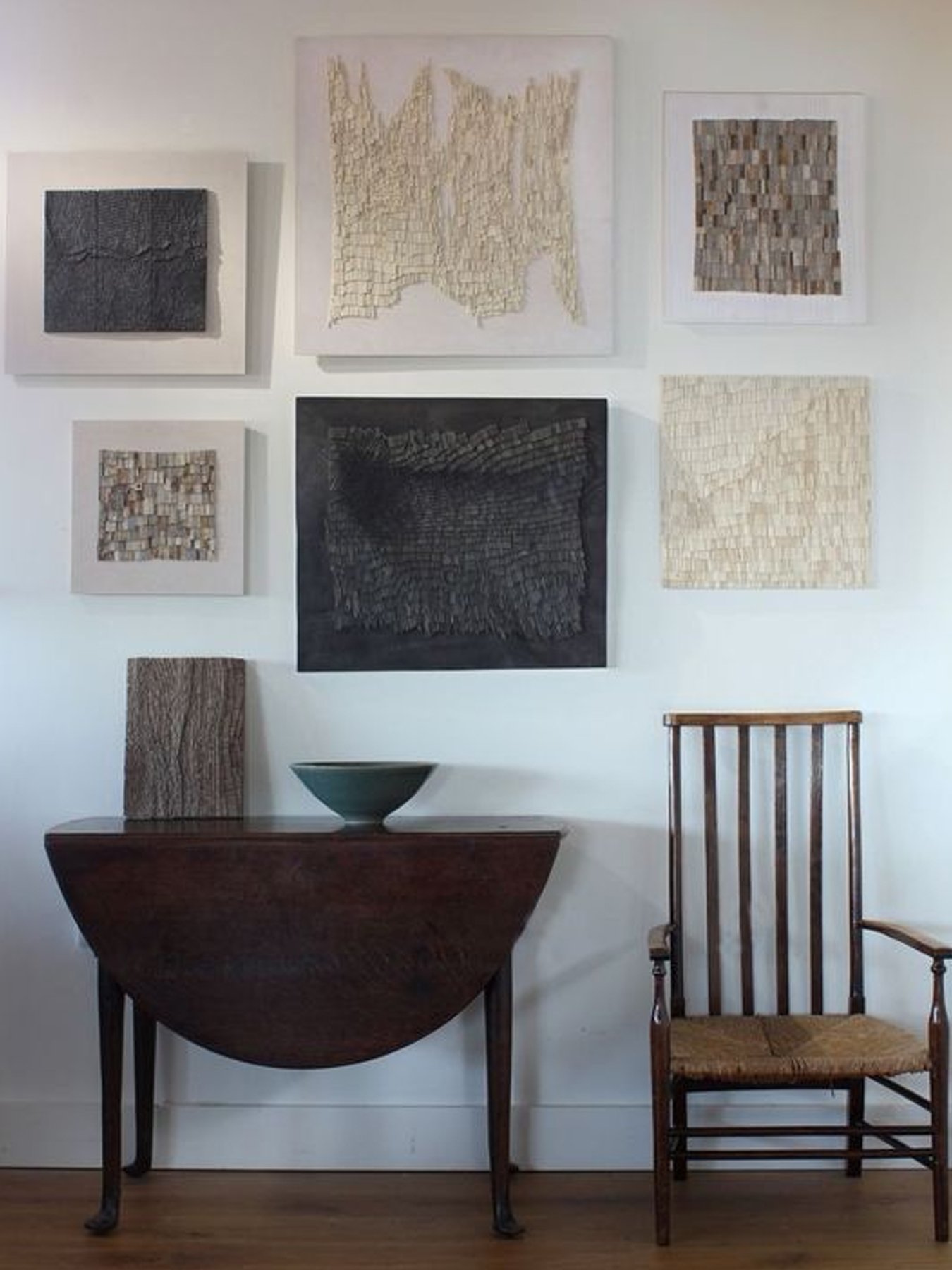
3 min read
Wycliffe Stutchbury transforms discarded wood into art that evokes landscapes and abstract forms. WLLW joined him for a conversation about his creative process and deep connection to his materials.
Intuition and going with the flow are vital to artist and sculptor Wycliffe Stutchbury’s practice. The woodworker and sculptor takes his time over his large panels and wall hangings, arranging slender timber tiles in a pattern that suggests an aerial image of a landscape or something entirely more abstract. “Patterns seem to just develop, which I think is what happens in nature,” says the Wales-based Stutchbury. “I’m not imposing on the work too much,” he says. His process is slow and contemplative. “There are times when I do, when I have to set out a format and I create a landscape, but within that I try and let it just breathe.”
Before focusing exclusively on this innovative artform, Stutchbury studied at the London College of Furniture and worked as a furniture maker for more than two decades, with stints of teaching at the Bartlett School of Architecture and working as a consultant wood conservator. The skills acquired while working so closely with wood lent themselves perfectly to his creative metamorphosis. “When I’d come across beautiful wood, I’d think that it is a shame to have to turn it into something functional,” he says, “and it distracted from its beauty. A lot of timber needs to be appreciated without the distractions of form and function.”
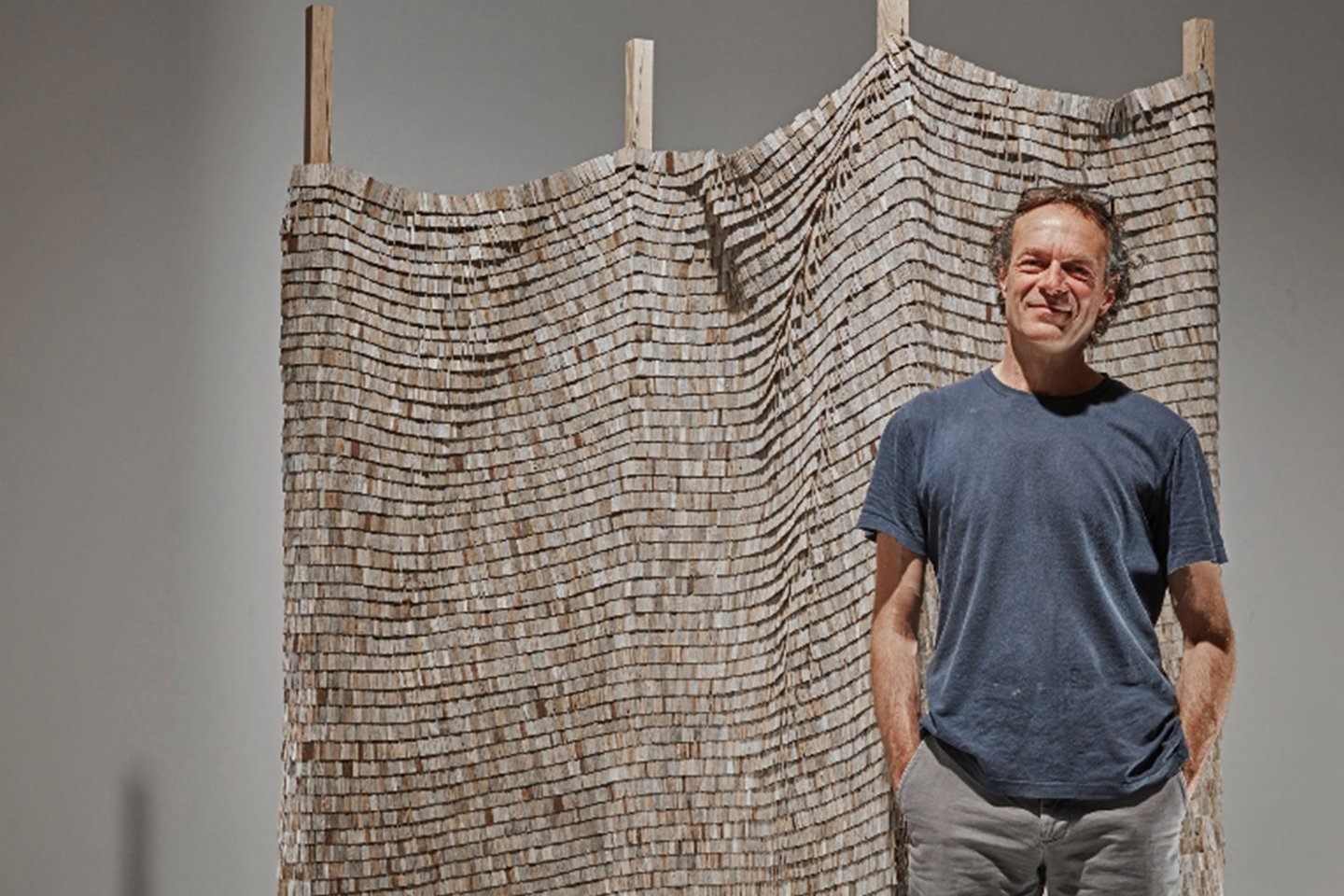
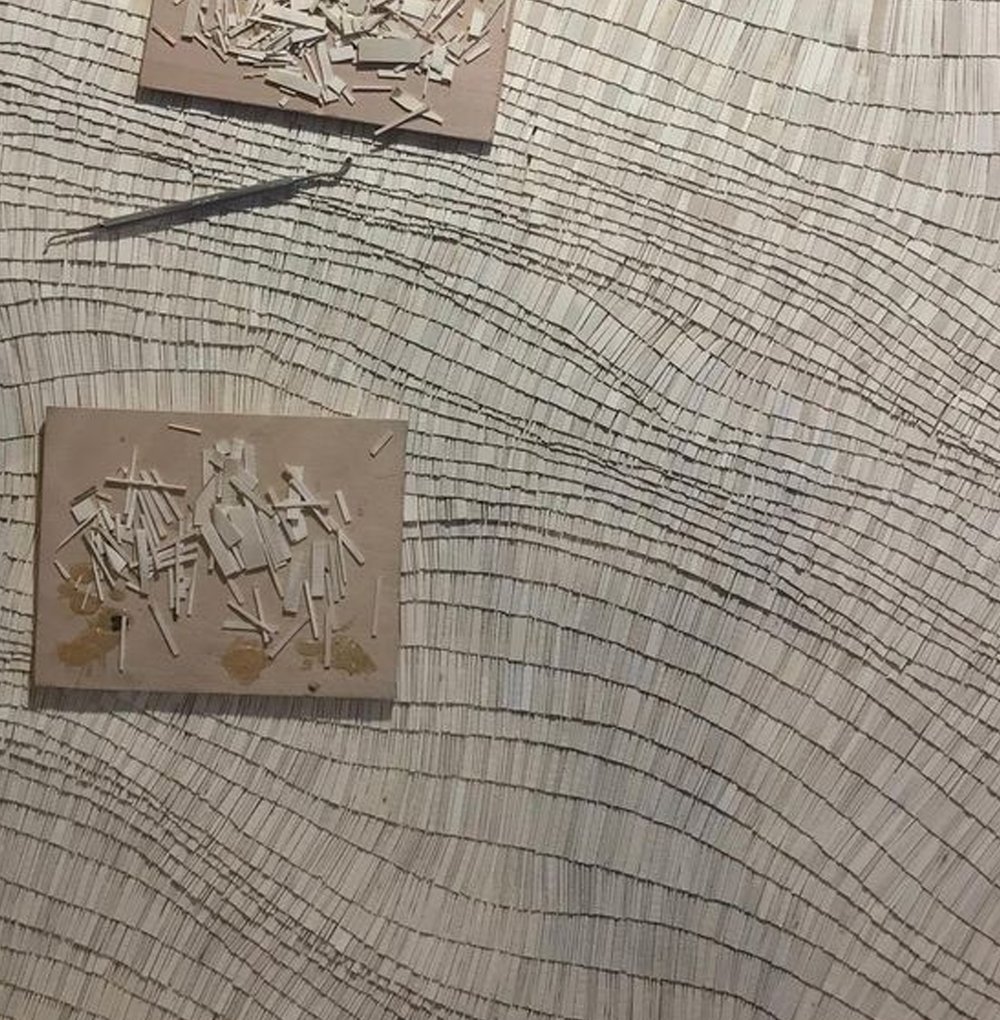
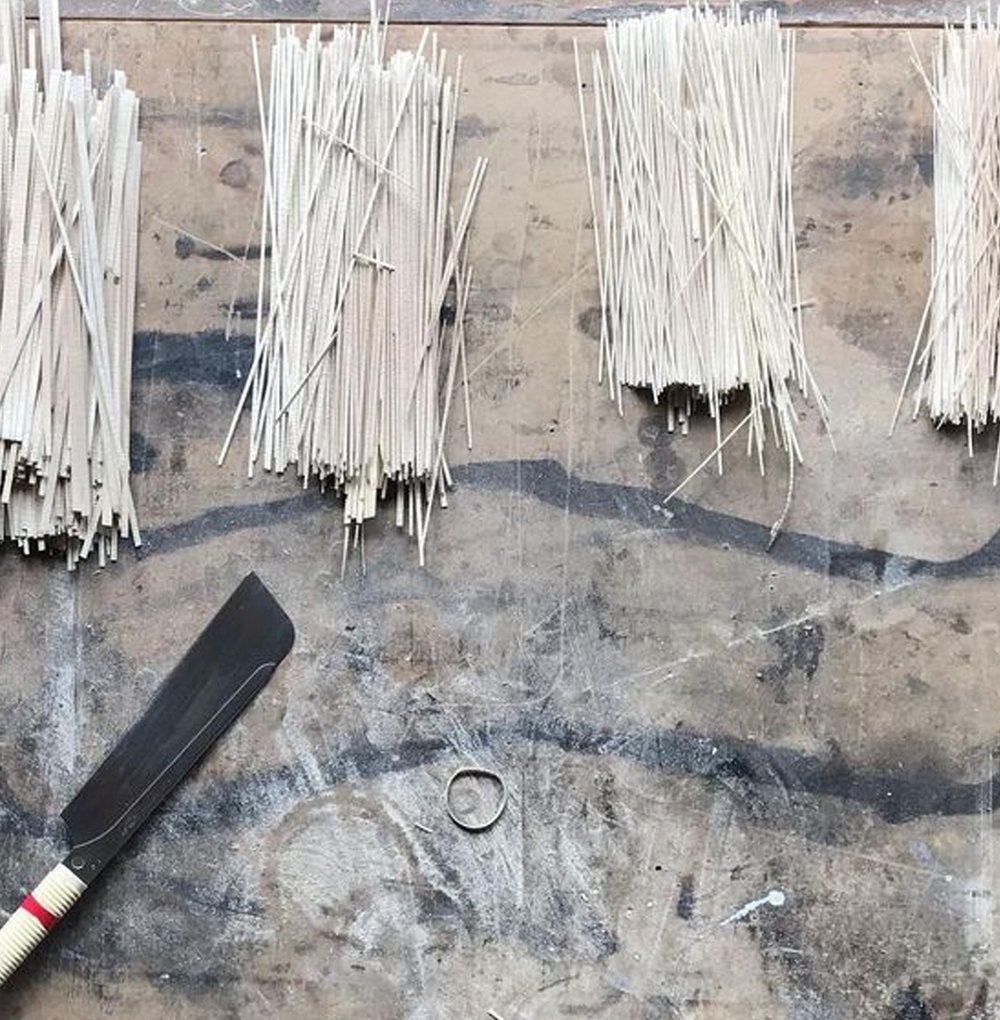

Stutchbury’s process first began to take shape when he picked up discarded timbers from a neighbor’s roof renovation. “The roof had been leaking, so it had these fantastic colors. These grays and browns and the sort of staining and weathering,” he says. “I just made a flat panel, cutting them all up, and it was just about studying its color and texture. It was very simple. I wanted to get across what lovely, rich colors they were.”
“A lot of the wood’s soul can be lost when it’s too perfect."
Wycliffe Stutchbury
He now works with wood such as white holly and dark bog oak, which he sources from East Anglia. Much of the timber had already been discarded or isn’t suitable for furniture making or construction. “It’s extraordinary stuff,” he says of the bog oak, which was once burnt by farmers who dug it up when cultivating their fields. “It feels like it’s on its way to becoming something else, like it’s taking on a different composition. It’s been in the ground for thousands of years and when you cut it open, it doesn't behave like timber,” he explains.
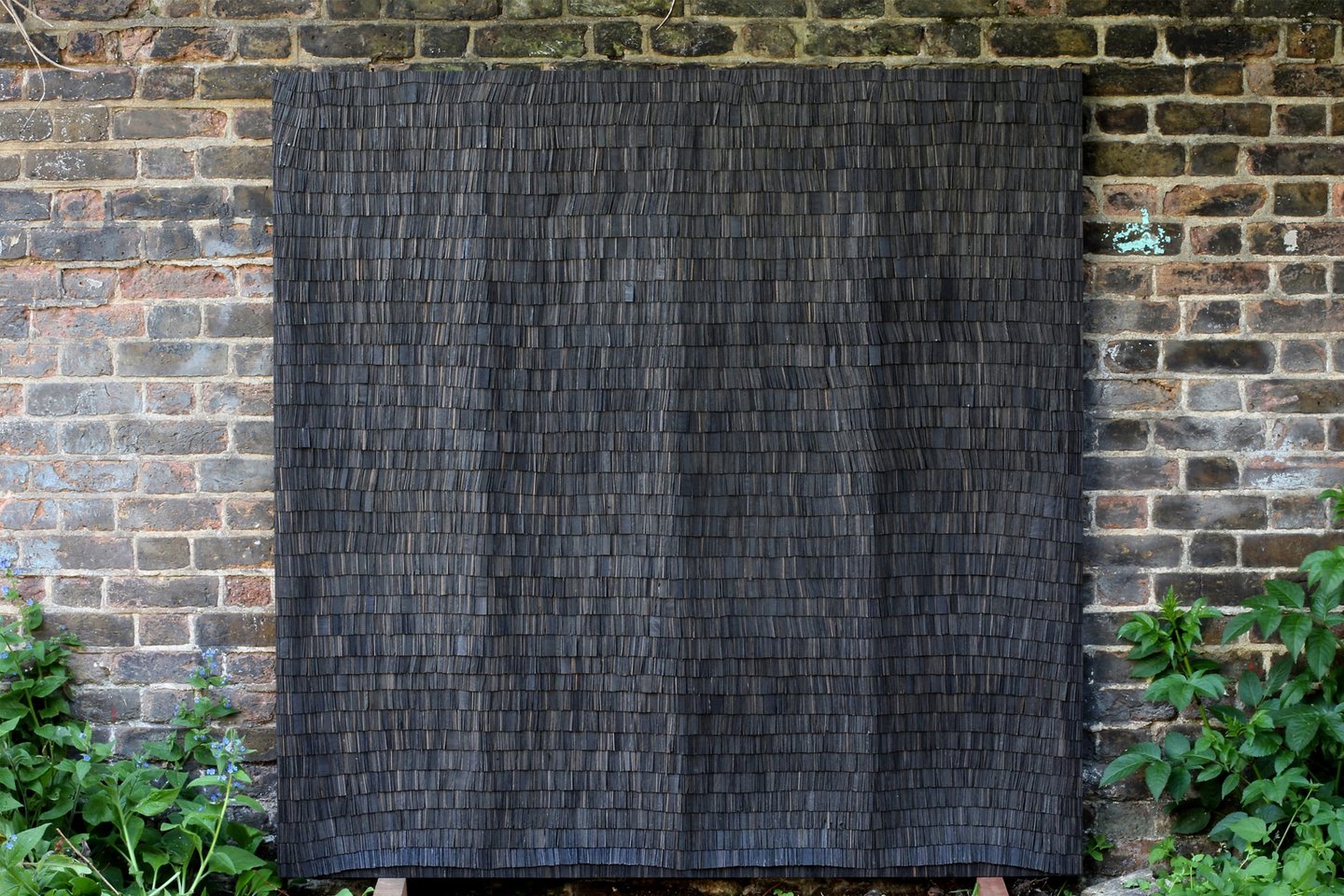

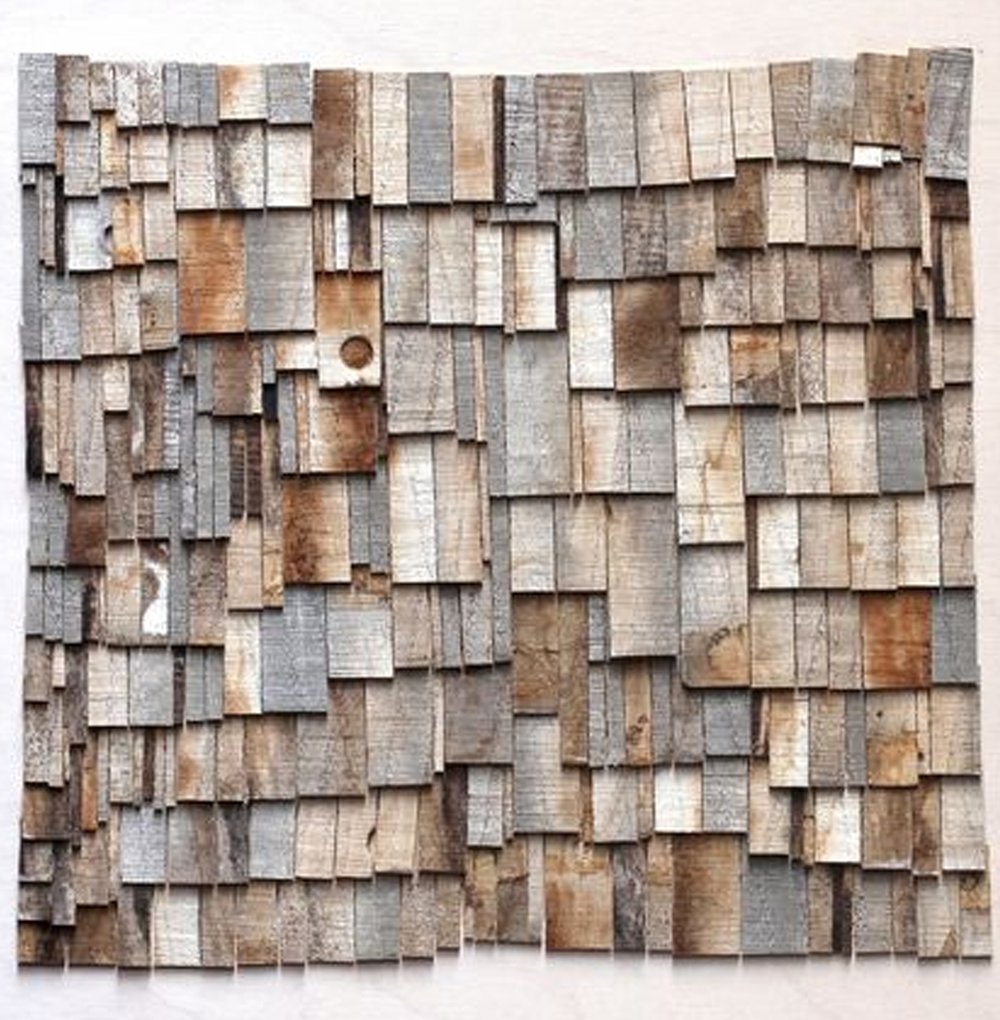
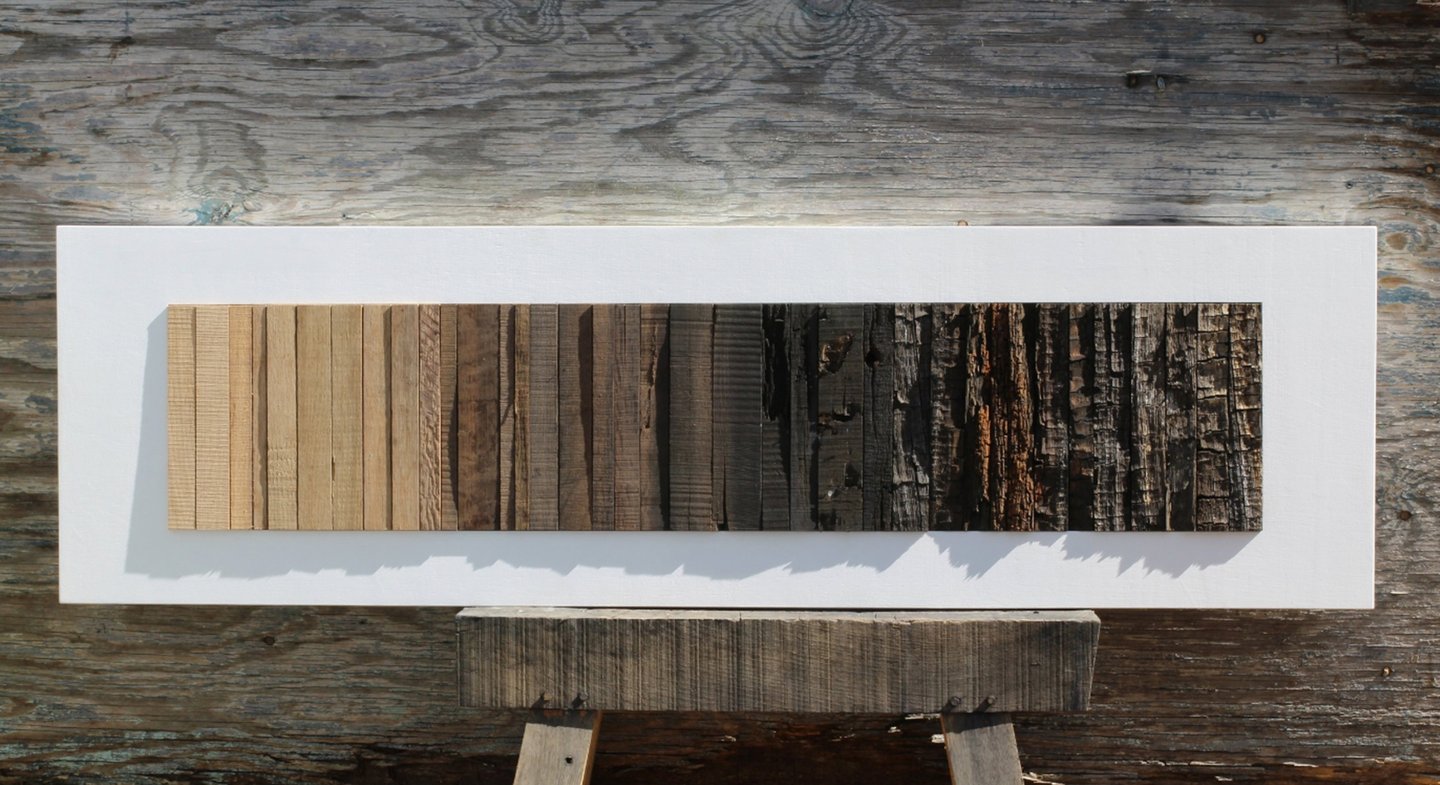
Despite often being led by his material, there are times when he has a set idea and wants to see it through. In one triptych, he shows a bird’s-eye-view of where a curving waterway in the Norfolk Fens turns into a straight channel. This man made intervention in the landscape is reflected in the piece itself, where the excavated bog oak tiles, which show the wood’s ethereal, gleaming beauty, are maneuvered by him to create a specific effect. The texture and tactility of the gently shimmering wooden shingles are part of his artworks’ attraction. “A lot of the wood’s soul can be lost when it’s too perfect. I think there is a danger, having come from a making background, to overwork things. But the material here is absolutely raw. And I think this definitely helps the viewers to connect with the work.”
The artist is currently showing a three-paneled screen, Hundred Foot Drain/Annie’s Wood, in Venice as part of Homo Faber. The work is a foray into creating something functional without distracting from the texture and color of the wood – in this case felled holly and excavated bog. Private commissions are pouring in and are keeping him busy in his workshop in Wales. “Next, I am going to work on a series of spheres turned from adjacent sections of an ash tree that has been part of the view from my workshop but is now in the late stages of ash dieback,” he says, referring to the fungus causing large-scale ash tree decline. “Otherwise, I want to experiment with the format of my tiled panels so that they create shapes in their own right.”
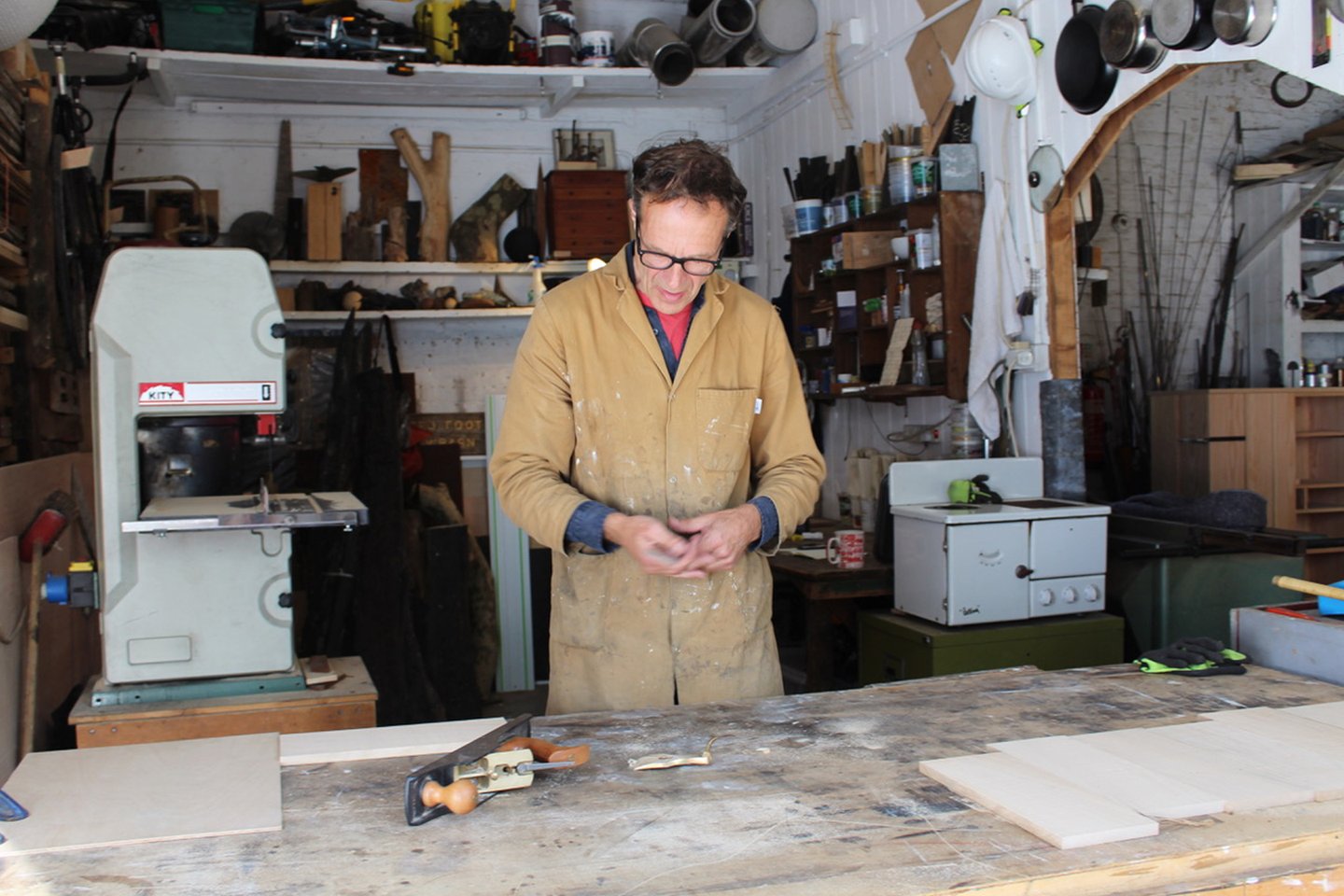
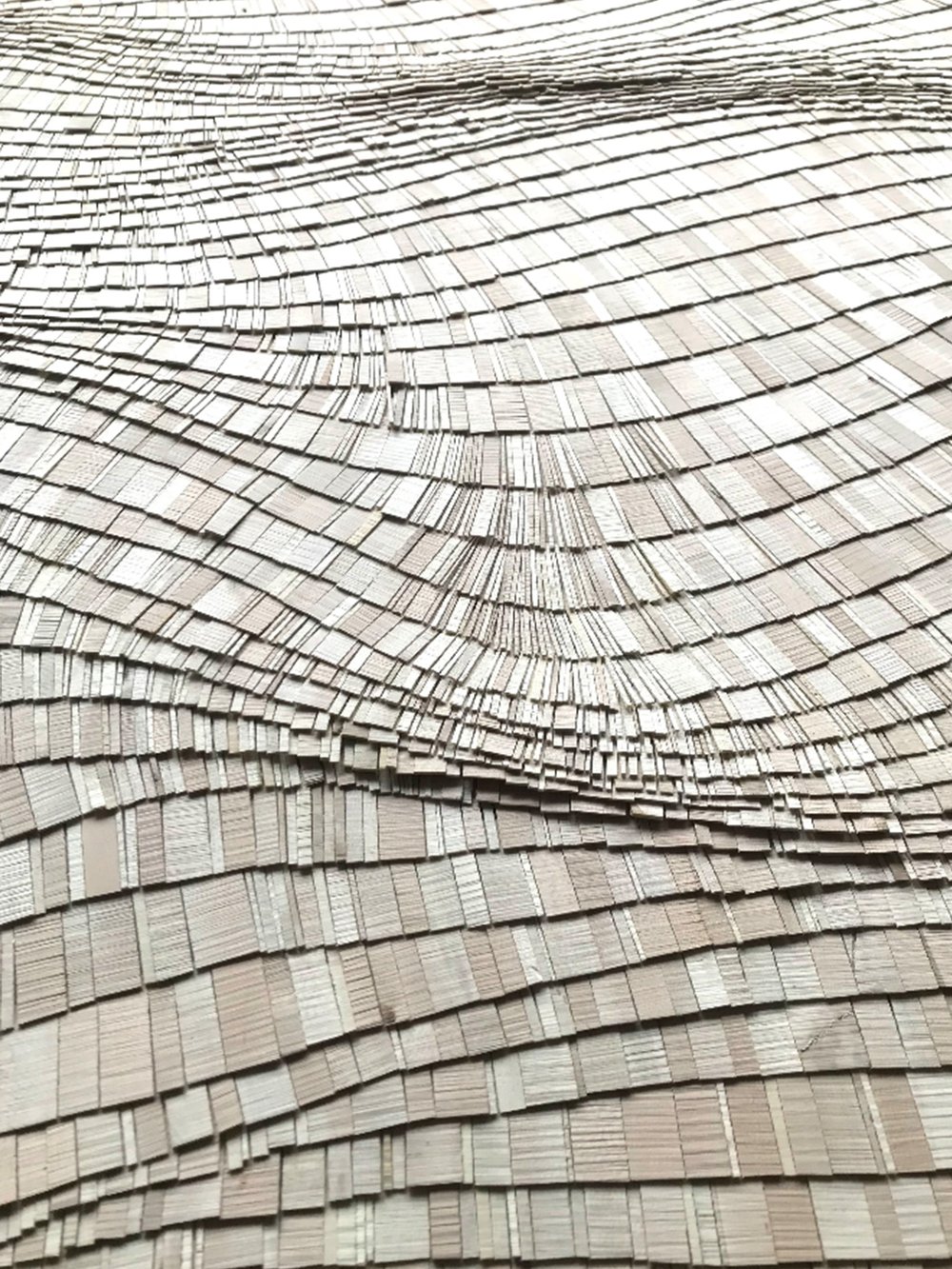
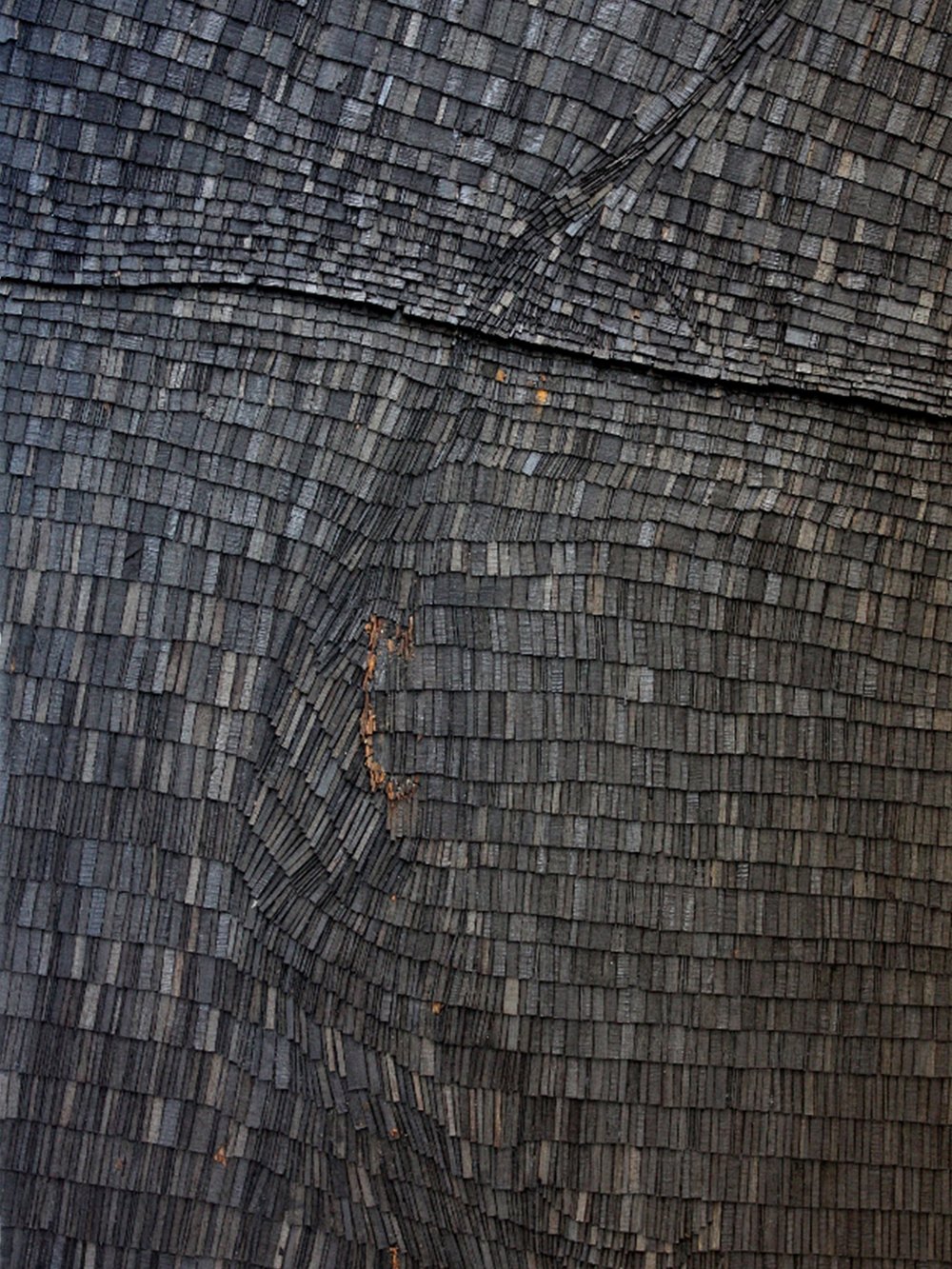

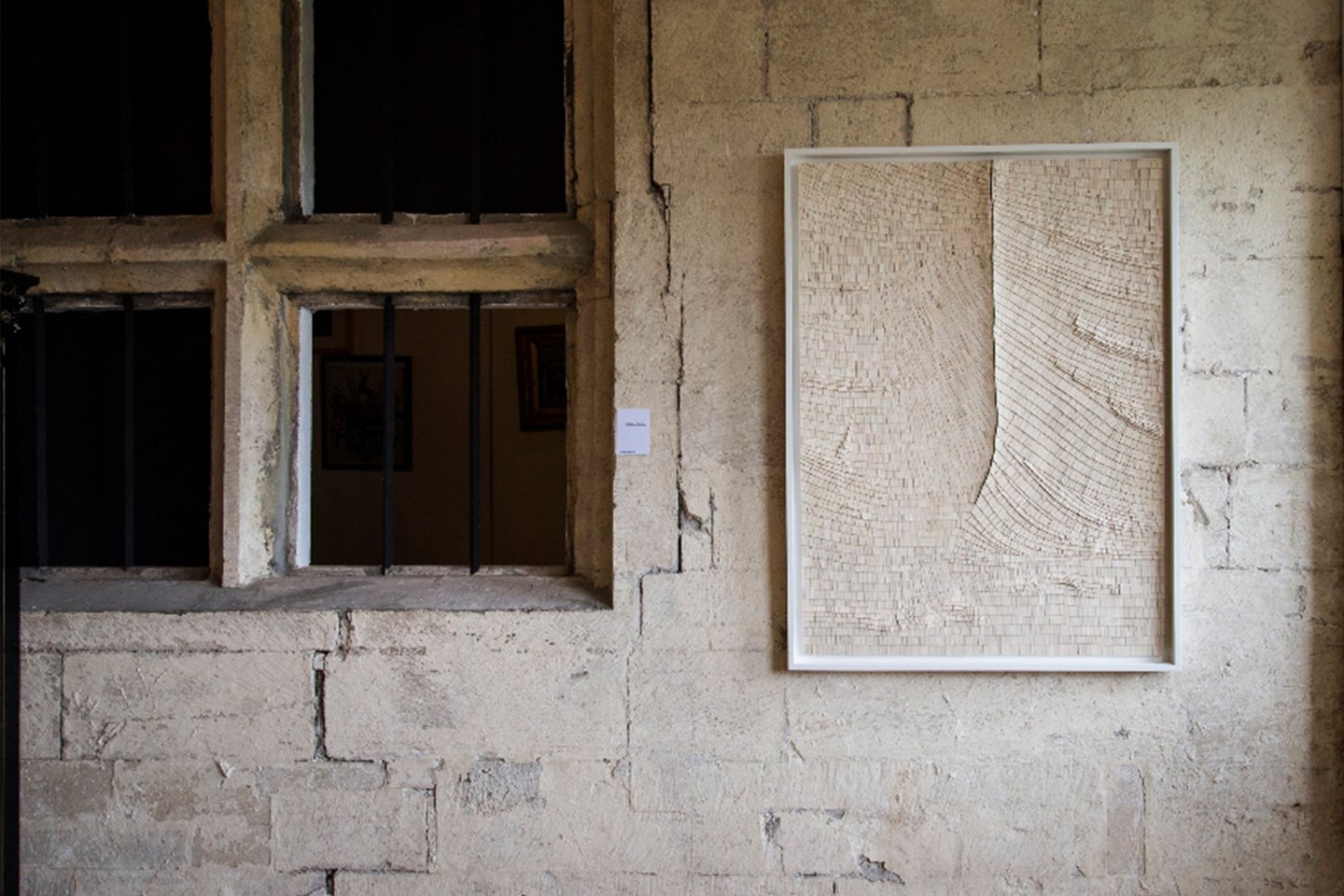
Photography: Wycliffe Stutchbury


4 min read
WLLW meets the founders behind Forest + Found, an art collective that uses natural and found materials to create remarkable works rooted in craft traditions.
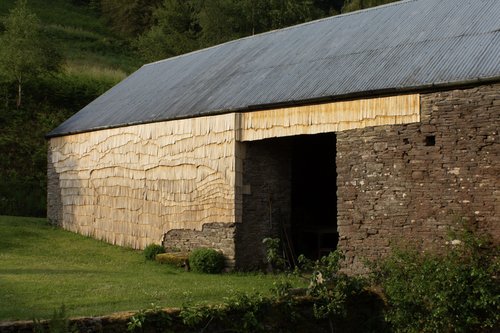
5 min read
Inexpensive, sustainable, versatile and efficient: why the humble wood shingle is enjoying a revival in the building industry.